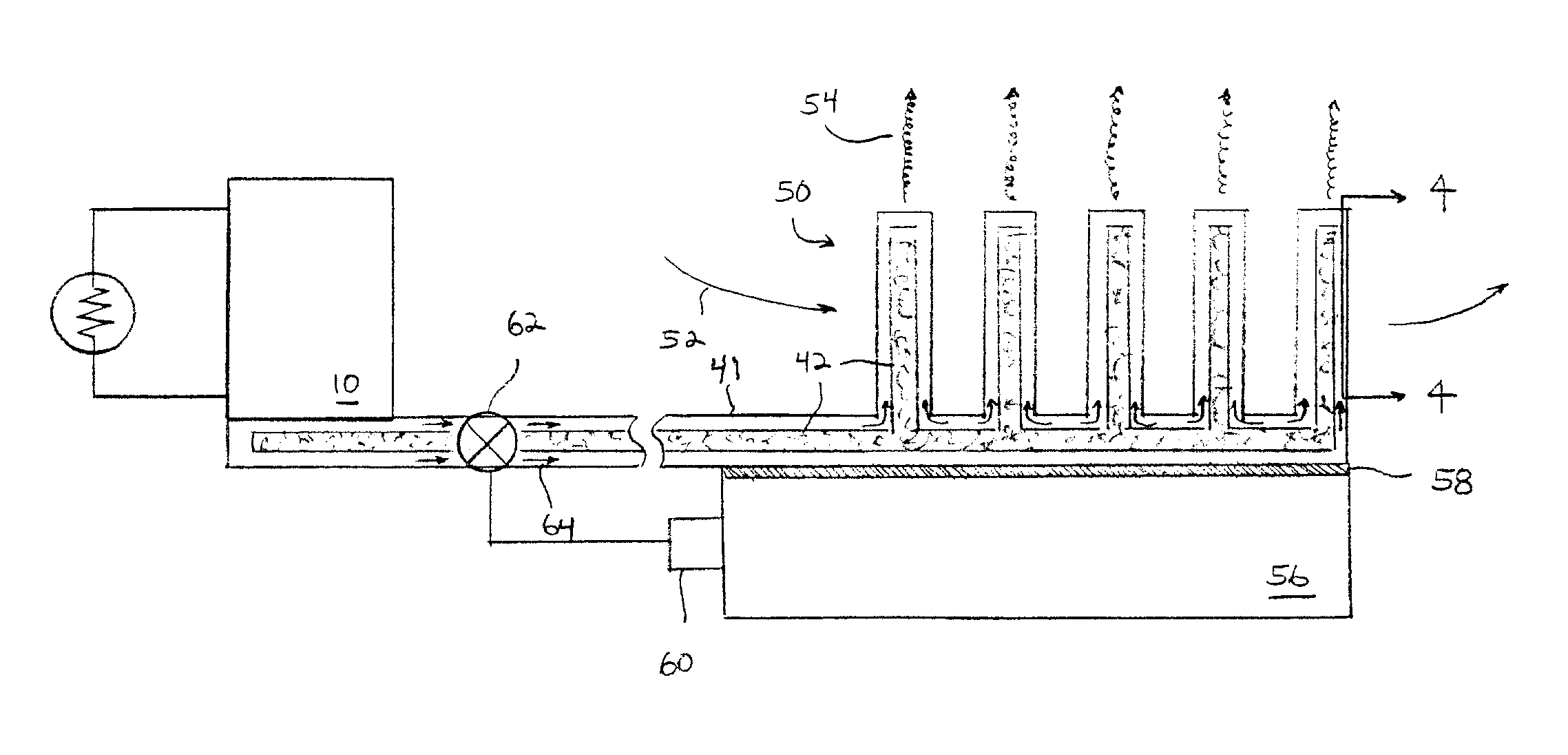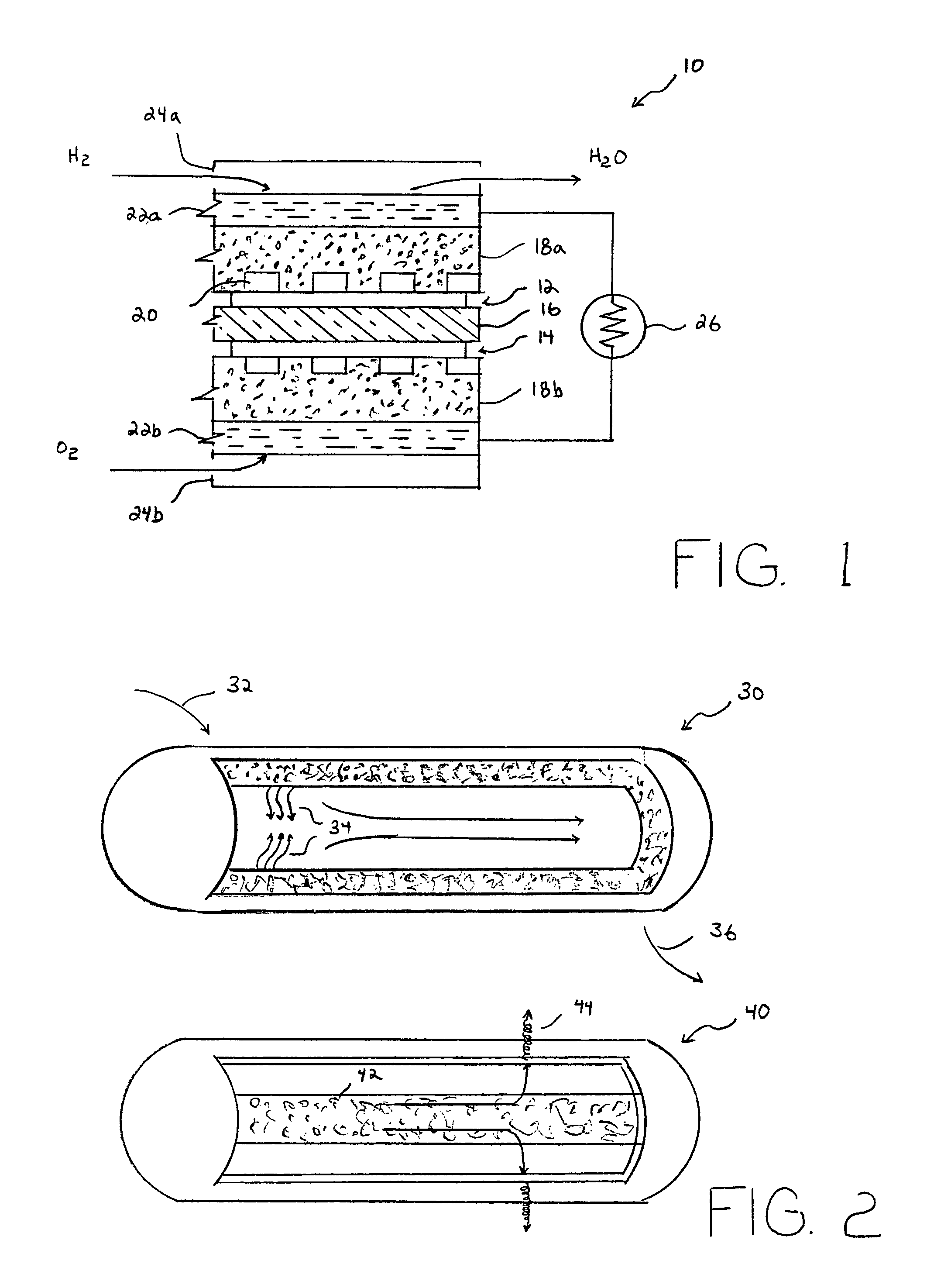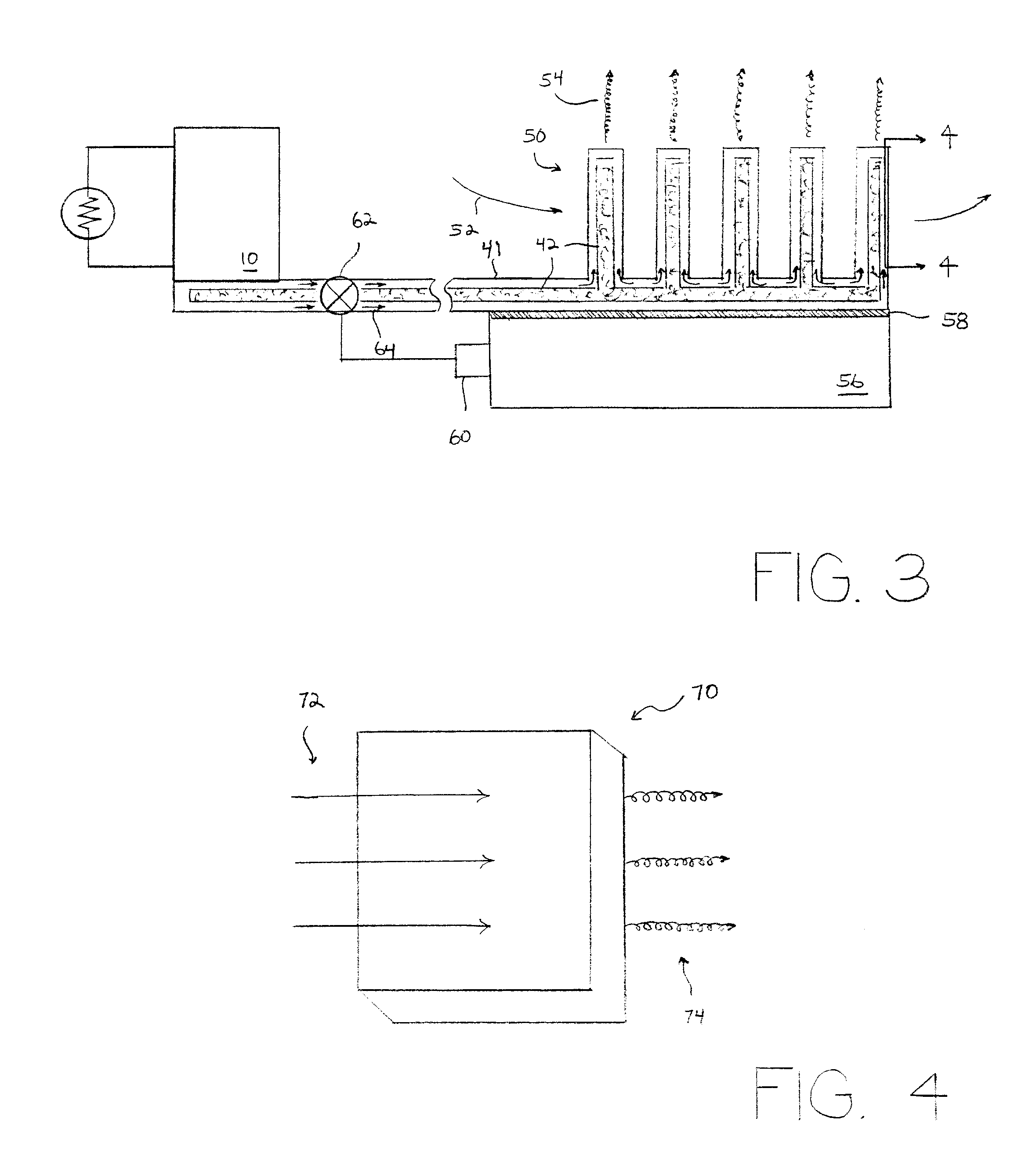Fuel cell having an integrated, porous thermal exchange mechanism
a thermal exchange mechanism and fuel cell technology, applied in the direction of electrochemical generators, lighting and heating apparatus, semiconductor/solid-state device details, etc., can solve the problems of restricting the transport of gaseous species and limiting the improvement of fuel cell operation
- Summary
- Abstract
- Description
- Claims
- Application Information
AI Technical Summary
Benefits of technology
Problems solved by technology
Method used
Image
Examples
Embodiment Construction
[0023]Turning now to the drawings, FIG. 1 illustrates one form of a fuel cell 10. It is understood that there are numerous forms of fuel cells with different layouts, different structures, and different numbers and sizes of layers, depending on the fuel cell application. Regardless of the differences in fuel cell types, applications, layouts, and structures, it is contemplated that any electrochemical device that converts chemical energy of a reaction to an electrical energy is henceforth referred to as a fuel cell. The example shown in FIG. 1 is that of only one type of fuel cell having a plurality of layers, including a fuel electrode (anode) 12 to which fuel is fed. It is understood, however, that the term “fuel cell” used herein contemplates all types of fuel cell configurations, layouts, structures and electrochemical reactions necessary to generate electrical energy from chemical energy.
[0024]An oxidant electrode (cathode) 14 allows oxygen-containing gas to be fed. An ion exch...
PUM
 Login to View More
Login to View More Abstract
Description
Claims
Application Information
 Login to View More
Login to View More - R&D
- Intellectual Property
- Life Sciences
- Materials
- Tech Scout
- Unparalleled Data Quality
- Higher Quality Content
- 60% Fewer Hallucinations
Browse by: Latest US Patents, China's latest patents, Technical Efficacy Thesaurus, Application Domain, Technology Topic, Popular Technical Reports.
© 2025 PatSnap. All rights reserved.Legal|Privacy policy|Modern Slavery Act Transparency Statement|Sitemap|About US| Contact US: help@patsnap.com



